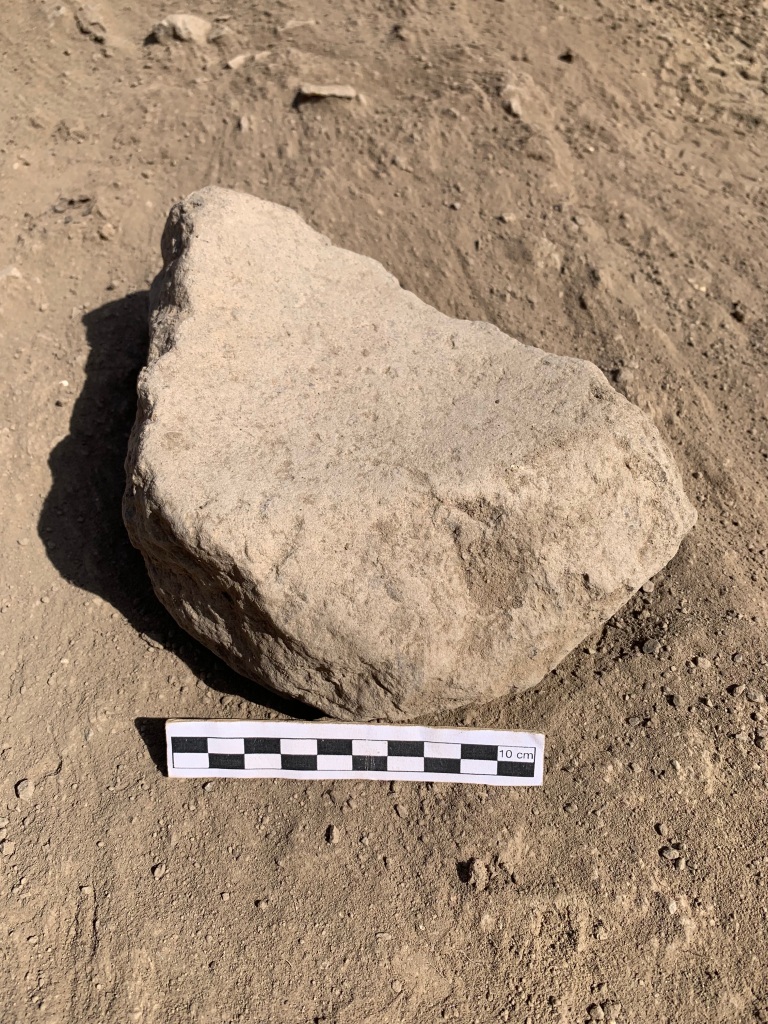Against all odds, we managed to continue our fieldwork in 2022. And what a season it was! This year we had old hands and new team members and we were also joined by Inspector Abdelhai.
We concentrated on first millennium BC and Neolithic layers. We have obtained the greatest number of animal remains from all the seasons. Human remains were also uncovered and examined by Dr Iwona.

Here is where we placed our trenches

This season we finally reached bedrock in Trench 2, which offers the first entire archaeological sequence in Sudan south of Al Khiday. In the east wall, behind a thin veneer of soil, we found the top of a human cranium 10 cm above bedrock and 135 cm from the north wall. It is the deepest skeleton yet excavated by this mission, but whether it dates from the Late Mesolithic or was dug into the deposit from the Neolithic will be resolved by radiocarbon dating. Accordingly, the decision was made to extend the trench to the east. The extension is now termed Trench 14.
The types of pottery in Trench 14 aligned with the geological strata: Assemblage 3 for Stratum B, Assemblage 2 for Stratum C and Assemblage 1 for Stratum D. Stratum B started with Spit 4 and yielded a lower grinding stone c. 23 cm from the north wall, a smaller grinding stone, pottery and animal bone. There are richer finds from Spit 6 onwards. Spit 6 yielded pottery, animal bone, shell, a pounder, a hammerstone and a lip plug. Spit 7 contained pottery, charcoal, shell, lip plug and a large pottery bead. There was also a human-made stone circle resting on the base of Spit 6, with large pottery fragments resting on top of the circle which extends northwards into the north trench wall. A figurine was found in Spit 8. The bottom of Spit 11 showed the cut for a burial pit – this is currently being studied, so more on that when we are finished.

More human remains were excavated across the site, including remains retrieved from the gully by Trench 2. This season erosional activity had exposed a human cranium embedded in Stratum C in the gully face. This cranium was carefully block-lifted. Associated leg long bones were also recovered, but no other human remains. Further skeletal remains were retrieved from Trench 12 and Trench 16 had a very interesting deposit of animal bones. At the moment we are working through all the material – so we will share more information when it is available.
This season, all team members took an active role in community work. Thanks to Rayan, a number of women came to speak to us about Wellcome’s excavations. A surprising number of objects from Wellcome’s camp still survive in the village. Most are paraphernalia, for example tea pots. These have been recorded, photographed and returned to their owners. A number of people joined in to help with flotation, led by Musab. Ezzu and Bkry proved to be excellent communicators – in fact this season’s outreach merits its own post (so once again, please bear with us).
It’s been a difficult time for everyone. We acknowledge that the political situation in the Sudan continues to be difficult. The pandemic is not over and vaccine inequality remains a concern. The project went ahead with the blessing of our Sudanese partners. We are deeply grateful to them and to the people of Jebel Moya.
This field season was made possible by a grant from the Society for Libyan Studies.

